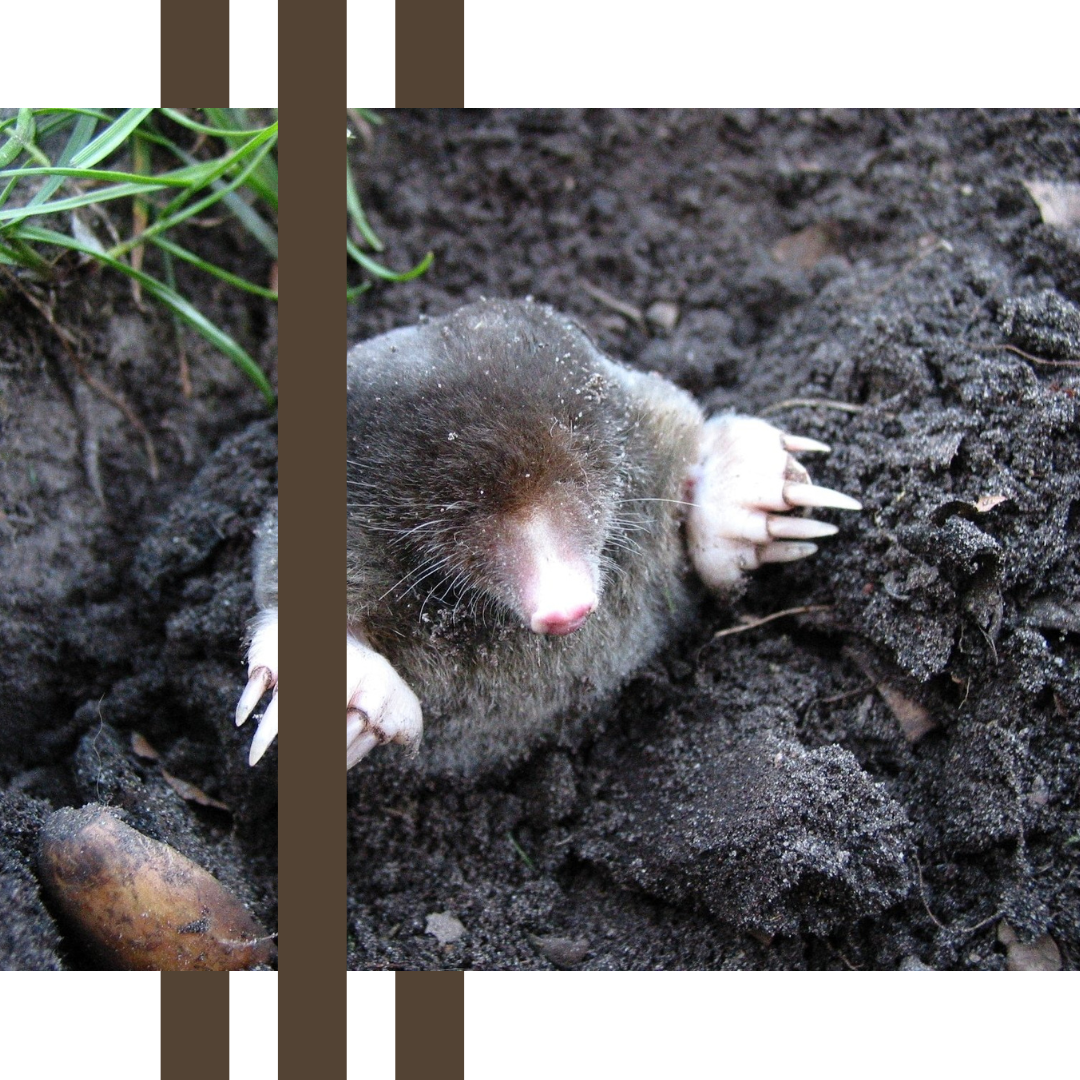
Mole Removal & Control
Central Iowa, a region known for its lush landscapes and beautiful greenery, is sometimes at the mercy of the very elements that make it charming. One such element is the relentless mole. While these creatures are an integral part of our ecosystem, their presence can disrupt the peace of homeowners and property managers alike.
The Problems With Moles
Moles can swiftly turn pristine lawns into unsightly expanses dotted with mounds and unpredictable tunnels. At Backwater Wildlife Solutions, we understand the challenges these creatures present and are committed to restoring the harmony between man and nature.
A mole, at first glance, might seem harmless. With velvety fur and adapted forelimbs meant for digging, they appear almost purpose-built for their underground existence. They aren't maliciously bent on destroying your lawn; they're just on a quest for their next meal, often consisting of worms and insects. Central Iowa's rich soil provides an abundant playground for these creatures, leading to a frequent clash of interests between moles and property owners.
Now, let's delve deeper into understanding these enigmatic diggers. Moles aren't superficial tunnelers. Their intricate underground highways serve a multitude of purposes, from hunting grounds to living quarters. While they're busy beneath the surface, above ground, the traces of their activity become all too evident. Raised ridges crisscrossing the lawn and unexpected mounds of soil suddenly appearing are telltale signs of a mole's presence. While spotting these signs early is crucial, it's equally vital to understand the broader implications of a mole invasion.
They aren't merely landscape disruptors. Their tireless burrowing has multiple repercussions:
- Ground Stability: The vast network of tunnels carved by moles can undermine the stability of the ground. This poses risks, especially in areas frequented by children, or places housing important infrastructure.
- Impact on Vegetation: Moles can be unintentional plant assassins. As they tunnel through the earth, they often sever plant roots, depriving them of essential nutrients and water. Over time, this can result in patches of dead or wilting plants across the lawn.
- Gateway for Other Pests: Abandoned mole tunnels can soon turn into highways for other unwelcome guests. Creatures like voles or mice might find these pre-dug channels convenient, leading to a compounded pest problem.
Getting Rid Of These Yard Terrors
Confronted with these challenges, many homeowners resort to DIY measures. The market is flooded with mole repellents, traps, and other supposed solutions. However, as many soon discover, these methods are not always effective. There's no one-size-fits-all when it comes to wildlife, and moles are no exception. What works in one yard might be entirely ineffective in another. Moreover, without a keen understanding of mole behavior, DIY efforts can sometimes exacerbate the problem.
That's where the expertise of Backwater Wildlife Solutions comes into play. Our approach to mole removal is methodical. We begin with a thorough assessment to understand the extent and nature of the infestation. This involves identifying active tunnels, understanding the probable size of the mole population, and gauging the damage extent.
With this knowledge, our trained technicians employ proven techniques to address the problem. We're not just about removal; we're about providing lasting solutions. While we effectively counter the current infestation, we also equip property owners with knowledge. Regular lawn maintenance, such as mowing, proper watering, and soil aeration, can make an environment less attractive to moles. Physical barriers, like underground mesh, can also deter these creatures from re-entering treated areas.
Central Iowa's beauty is a testament to its harmonious blend of urban and natural elements. At Backwater Wildlife Solutions, we believe in preserving this balance. Moles, despite their disruptive nature, are a testament to the richness of our soil and the vibrancy of our ecosystem. As we go about ensuring our clients' peace of mind, we're also reminded of the delicate dance between man and nature, and our role in facilitating it. Contact us today for all your wildlife needs.
Frequently Asked Mole Questions
Q1. Does mole activity increase during specific seasons?
A1. Yes, activity can be more pronounced during spring and fall when the soil is moist and easier to dig. These are also times when their food sources, like worms, are abundant near the surface.
Q2. Are there plants that can deter them from my garden?
A2. Some plants, like castor beans and marigolds, are believed to repel moles. However, their effectiveness can vary, and it's always best to consult with an expert before making landscaping decisions based on mole control.
Q3. If I get rid of worms in my lawn, will moles leave?
A3. While worms are a primary food source, they also feed on various insects. Eliminating worms might reduce some mole activity but might not completely deter them, and it could negatively impact the health of your soil.
All Rights Reserved | Backwater Wildlife Control

